It was a perfect morning for deer hunting. It was late October, 53 degrees and a 5-7 mile per hour wind was blowing out of the northeast. Directly in front of me, standing at 10 yards, was a 10 point buck that I recognized from game camera photos. The deer was walking quartering away and stopped right on cue. The arrow rocketed through him and hit the ground before he even flinched.
I could immediately see blood. He lurched forward and hit high gear in only a few steps. A few seconds later I heard him crash. It was quiet again. Just to be safe, I waited 15 minutes before walking to the end of a 45 yard long blood trail that culminated with my bow buck.
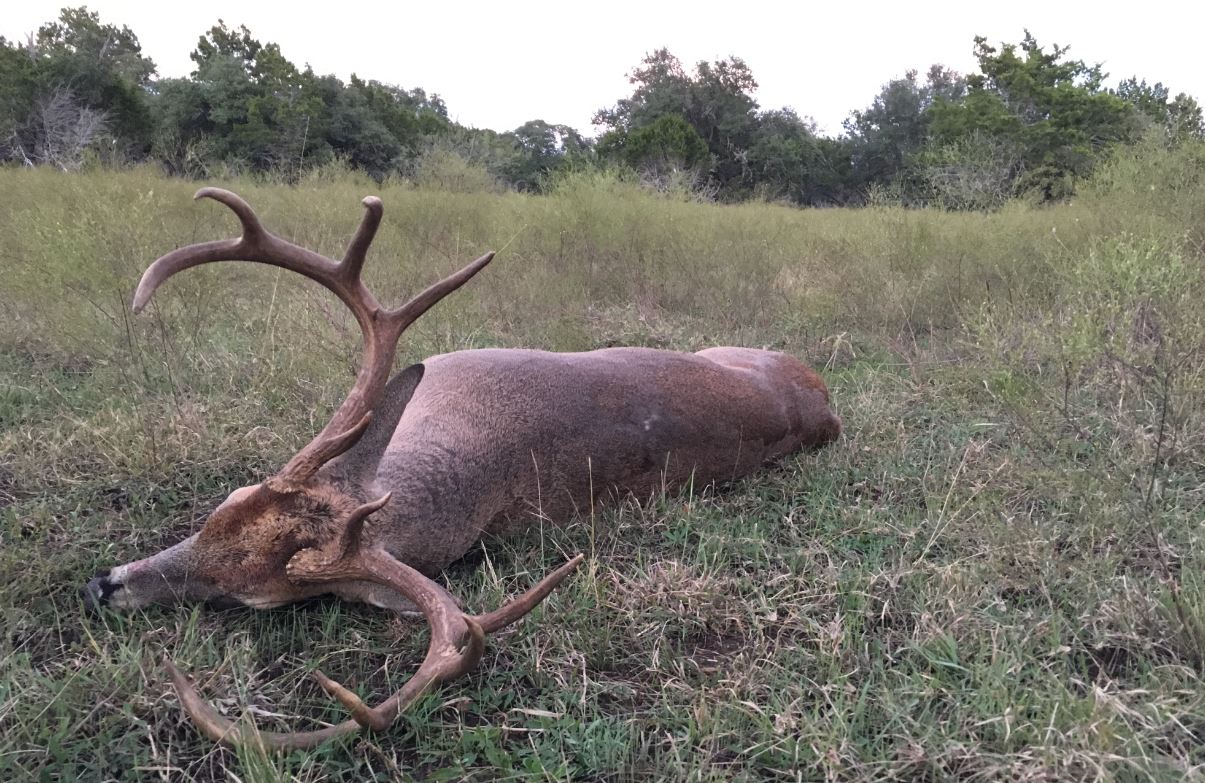
I dragged the deer back to the truck, which was parked less than 60 yards away. You see, I was deer hunting a pint-sized property in Central Texas that consisted of a mere 7 acres. It was the second time that I had hunted the small tract in 6 years. Three years earlier had resulted in a mature, heavy-bodied 9 point whitetail buck.
My latest deer, why far from a “book” buck, was the product of only one deer management practice—harvest management. Not shooting him years earlier when he was younger was the strategy, just letting him go so he could grow into something more substantial. Deer hunting small properties can work, but you have to do it right from the start.
Deer Hunting Small Property 101
Keep it quiet. There is no real secret to this one, but it does mean allowing deer to be content using and traveling through a property. Larger properties afford protection to whitetail by the shear amount of space they put between them and any disturbances. Not the case when talking about a small property.
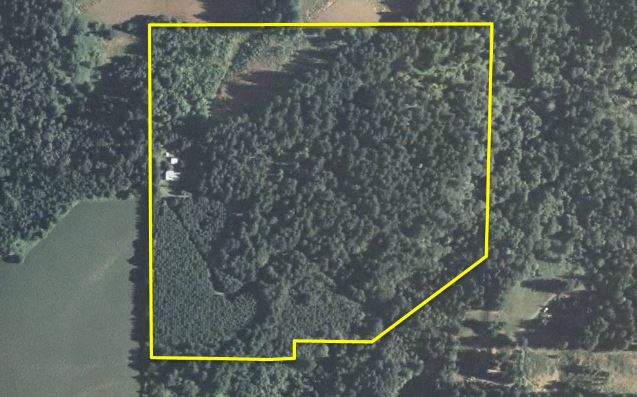
Small acreages do not have the kind of built in buffer that distances deer from disturband, so it’s much more important that deer are not continually pushed off of the property, especially as the hunting season approaches. As a note, whitetail can deal with regular disturbances, but it’s different come hunting season once hunters take to the woods.
Mature deer, both bucks and does, become well aware of the sounds and smells that are out of the ordinary for the places they call home.
Help Their Diet
Just like the way to man’s heart is through his stomach, the best way to put an arrow or bullet in a buck’s heart is to keep him coming back for more—keep him well fed. Dominant bucks do not look for the poorest or even the most mediocre meal on the landscape as a part of their diet. They look for the best grub and they keep it to themselves.
If a big ole buck finds high quality forage on the small property you plan to deer hunt this fall then so much the better. A deer has got to eat, right?
The largest antlered bucks in an area will typically have the biggest bodies and that’s because they eat well. Give them something good on your property that is not found anywhere else in the area. Then you have a shot at making your small acreage property part of a dominant buck’s core area.
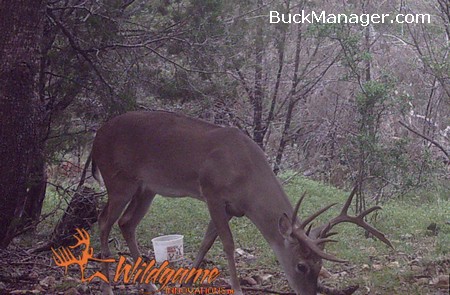
It’s always a good idea to choose something that is highly tasty or high in protein. This could be anything from pelleted protein to cottonseed to other types of manufactured foods/baits that attract deer, including well-prepared food plots. The bow buck above had a taste for the Nut ‘N More Drop Block by InSights Nutrition. It’s actually a block that I believe was developed for deer breeders but I’ve found that free-ranging deer really go for this sweet, peanut-based product. Water can also be a great attractant in arid areas.
Know Your Small Tract
Not all small properties provide deer habitat. Smaller properties do not need an abundance of cover, but whitetail will avoid areas that do not have enough suitable screening cover to even provide for perceived safe travel. If you want whitetail deer to use a property it will at least need to have cover comprised of brush, grass, or small trees that are at least 3-4 feet in height in or near potential travel ways.
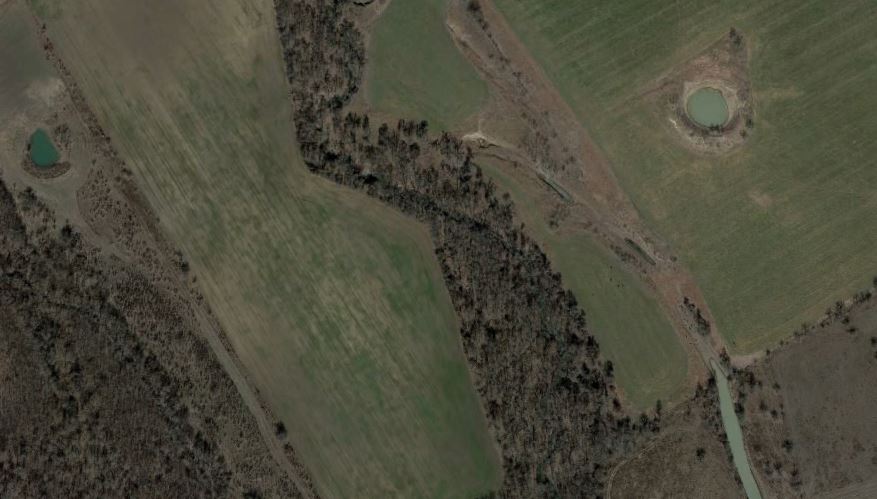
Some of the best small acreage deer hunting can be found on tracts of land that provide good travel corridors. In these cases, providing food or water may just be the icing of the cake for deer that are already traveling through a property. A creek, natural funnel or pinch-point can be a regular deer producer, even if it’s located on just a small tract of land. This is also something to consider when evaluating a hunting lease or when looking for property to purchase.
Timing is Everything
Like life, timing is everything when it comes to deer hunting. Time it just right. Use game cameras to keep informed of when animals are visiting your feed stations or traveling through the area. Most bucks will stick to well-defined feeding patterns before the breeding season turns them into nomads. If you don’t have the opportunity to hunt the pre-breeding season then the rut is, of course, a great time to hunt.
This is can bucks will longer distances in search of hot does. Know when the rut takes place in your hunting area, know the weather and get out there to take advantage of what’s going on. Deer will move throughout the day when the time is right.
Another option is to try rattling. Bucks will readily respond to rattling antlers a couple of weeks before the breeding season kicks into high gear. You may also have a shot a drawing them onto your small hunting tract after the rut as tapered off. A buck may cruise by to take a look if he thinks there is one last shot at breeding success.
Hunt Deer, Don’t Scare Them
Hunt only when the wind is right. This idea is so simple in theory, but it had been one of the most difficult things for me to put into practice during the hunting season. The problem had always been that I wanted to be in the field regardless of whether or not the weather was right. After years, however, I’ve learned that not only is hunting bad wind not effective, it can can run a buck out of the area for good.
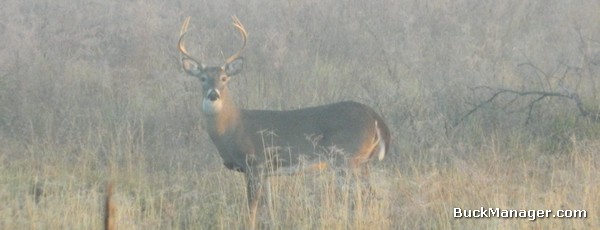
I had one buck wind me several years ago and he never showed back up, at least not on game camera, for almost 5 weeks. Mature deer learn real quick when an area is not safe. That’s how they got old.
Hunting Small Acreage Successfully
These tips are a good place to start when deer hunting smaller tracts or any property for that matter. Whitetail are smart animals and that makes them challenging to hunt. It also makes it that much more rewarding when we’re lucky enough to bag a good one, especially on small acreage.
There is something about hunting these mini properties that makes deer hunting even more challenging. It’s good to shoot deer, but keep always remember that deer harvest management is even more important on small tracts. Do not over hunt them.
I am presently hunting a 40 acre lease in suburbia Georgia. We just acquired the lease a week ago, so we’ve had no time to scout for the best areas. With limited scouting knowledge of the property and just a one year lease, how often should we hunt or even be on the property? It’s just me and my son, by the way, that hunt it.
Stephen, there is no set answer on a question like this, but I will offer some starting points. With no time scout, the key would be to first think about the property from a higher level… get an aerial photo! This may help you identify any travel corridors or pinch points. If none exist on the property, then look at the property as it connects to other adjacent properties that may have such features. How are deer going to move across the land. Any features that impact deer movement — fences, creeks, ridges — should be examined and considered.
The next step will be to hunt when deer are moving. Hunt the pre-rut as much as possible while bucks are in search mode. Later in the season, focus on hunting after cold fronts when weather is cold and deer are moving. Later in the season, avoid warmer weather unless those are the only days you can go. Best of luck!
Hunting a piece of property in between two small subdivisions… 15 acres wide by 25 acres long. Just found out I’m screwing it up by having my stand in the same spot for years and having to trek through prime territory to get there… Thanks for the info.
I just moved to a property that has 7 acres of wooded sloping land… last summer I did find a nice buck rub and a well used trail in the middle of the acreage… do you think it would be feasible to put a permanent ground blind on the acreage, or should I move around every season?
Kimberly, permanent and portable stands each have their advantages. A permanent stand will offer you a lot of comfort over many seasons, but deer, particularly mature ones, will also recognize the stand as a threat.
You likely have a good idea on how deer use your property and where they travel. Without a doubt, a fixed stand location will alter the movement of deer across your property to some extent, especially after the hunting season is underway.
I would recommend establishing a permanent stand initially, then after a couple of years re-evaluate the travel patterns of deer using the property. At that time, you can establish a temporary setup, such as a lock on or ladder stand, which you can move around as needed.
You can monitor your permanent stand location as well as other parts of the property using game cameras to see who’s visiting and avoiding your main stand.
I hunt a small tract that has a creek along the western boundary and heads uphill to the east for about 120 yards. Deer are always winding me when I hunt my stand along the creek. Any ideas?
Christian, hunting in a drainage can be tough because a lot of your scent is going to settle there. I’m going to assume you are hunting in the evening. If this is the case, then try hunting in the morning when thermals should be rising. The morning is not typically as good as the evening hunt, but it’s going to be better than tipping off all the deer because your scent is sinking into your hunting grounds. Best of luck!
Love your insight, Buckmanager. Your advice in the past has been very helpful for me. I recently purchased a small 25 acre piece in South Ohio. It’s 20 acres of woods and 5 acres of overgrown pasture through the middle of the property, all sloping downhill North to South. The northern end of the pasture is surrounded by thick cedars, and the east side of the property is a formidable ridge of hardwoods sloping North to South. The west end holds a fairly large natural watering hole surrounded by cedars. My question, however, is concerning the pasture. It’s a bit overgrown with grass, briars and some small saplings. There are deer trails winding every direction through the tall grass. I did plant a 1/4 acre spring food plot at the southern end of the pasture. Just wondering if I should bush hawg the remaining 4 3/4 acres of pasture or leave it be to provide cover and bedding since the property is so small. The entire property is surrounded by big woods to the east and multiple crop fields less than a mile to the west. Would really appreciate your advice! Thanks, Brother